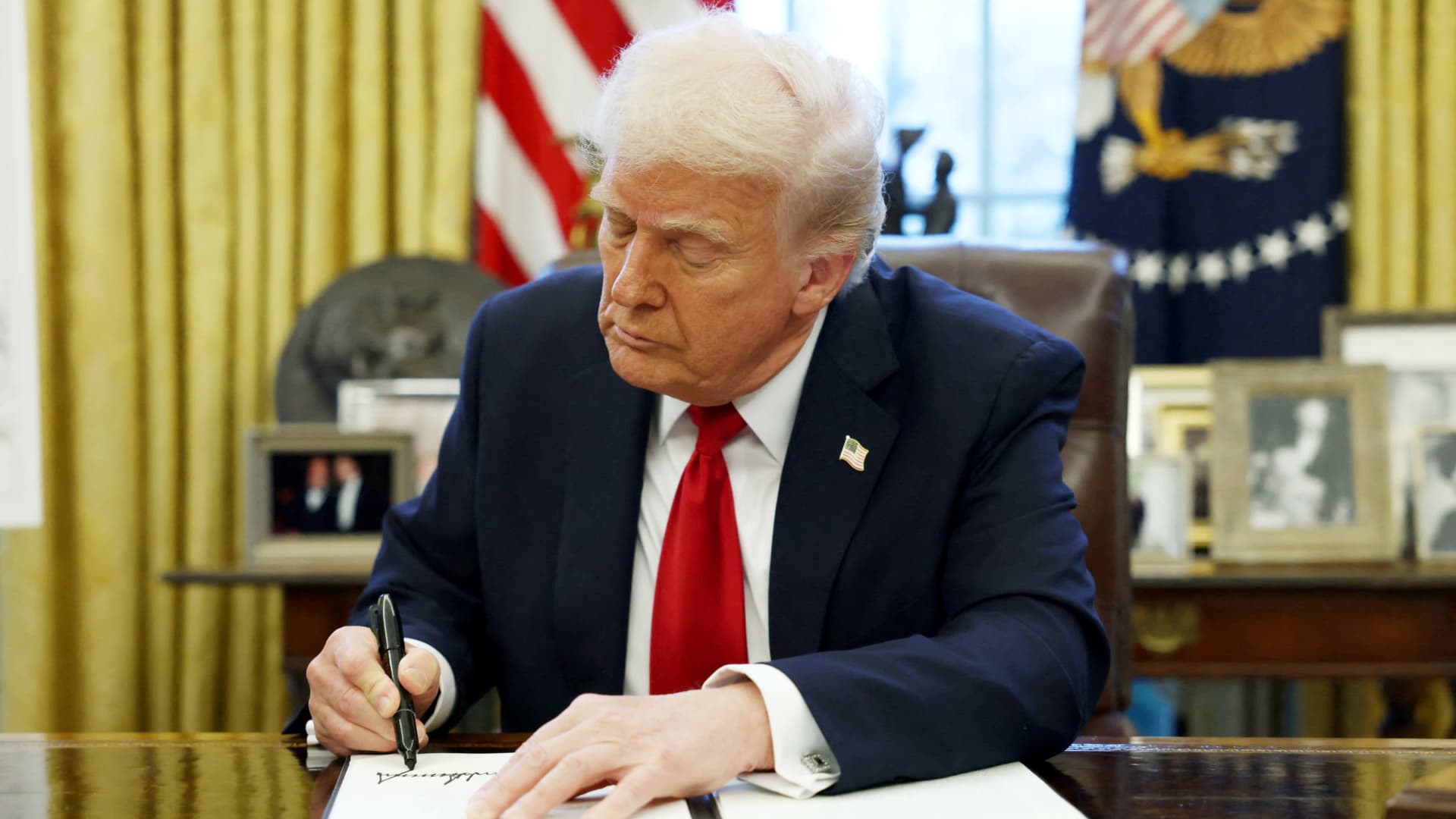U.S. President Donald Trump speaks to the media in the Oval Office at the White House in Washington, D.C., U.S., March 26, 2025.
Evelyn Hockstein | Reuters
President Donald Trump released a budget proposal Friday calling for a mix of cuts to domestic programs involving public health, education and clean energy, while seeking to increase spending on his priorities like border security and a bigger military.
The 40-page request was addressed to congressional leaders and accompanied by a letter from Office of Management and Budget Director Russell Vought addressed to Sen. Susan Collins, R-Maine, the chair of the Senate Appropriations Committee.
Overall, Vought said the proposal contains a 23% cut ($163 billion) in discretionary funding, and a 13% increase in military spending.
The White House budget comes as the Republican-led Congress is seeking to craft a massive bill for Trump’s priorities of tax cuts, higher spending on immigration enforcement and the military, spending cuts in other parts of the federal government, and a debt limit increase. Vought mentions the calls for border funding in the new budget blueprint.
White House budgets are usually symbolic and never become law as written. But they represent the president’s vision for spending and tend to influence the debate on Capitol Hill. They also tend to be a vehicle for messaging on the White House’s most popular priorities — and often propose difficult policy compromises or cuts that become the basis for political attacks from the opposition party.
Trump’s new proposals could affect the next round of government funding talks, with funding set to expire on Sept. 30 after passage of a six-month funding bill in early March. That legislation — unlike the party-line “reconciliation” bill — is subject to the 60-vote filibuster rule in the Senate, meaning it will need significant Democratic support to become law in the Republican-controlled Congress.
Trump’s budget proposes a variety of steep cuts to well-known government programs, including cutting the National Institutes of Health by $18 billion compared to 2025 levels, the low-income home energy assistance program (LIHEAP) by $4 billion, and the Centers for Disease Control and Prevention by $3.6 billion.
The budget also calls for various cuts to clean energy funding, education funding, scientific research and international aid.
And it proposes a funding boost for Trump priorities, including a $43.8 billion boost to the Department of Homeland Security, a $113.3 billion for the Department of Defense and $500 million for Health and Human Services Secretary Robert F. Kennedy Jr.’s “MAHA” — “make America healthy again” — priorities like promoting nutrition and exercise.
The Trump proposal is limited to “discretionary” spending and excludes proposals on “mandatory” spending, the major part of the U.S. budget that covers safety net programs like Social Security, Medicare and Medicaid. Yet that’s where difficult decisions on federal spending ultimately lie, with Medicaid proving to be a sticking point among Republicans as they consider their big bill on Trump’s tax and spending priorities later this year.
Trump’s budget won praise from Republicans like House Speaker Mike Johnson, who called it “a bold blueprint that reflects the values of hardworking Americans and the commitment to American strength and prosperity.”
“House Republicans stand ready to work alongside President Trump to implement a responsible budget that puts America first,” he said.
It was slammed by Senate Minority Leader Chuck Schumer, who vowed that Democrats will “fight this heartless budget with everything we’ve got.”
“Donald Trump’s days of pretending to be a populist are over. His policies are nothing short of an all out assault on hardworking Americans,” Schumer said in a statement. “As he guts healthcare, slashes education, and hollows out programs families rely on — he’s bankrolling tax breaks for billionaires and big corporations. It’s not just fiscally irresponsible, it’s a betrayal of working people from a morally bankrupt president.”





